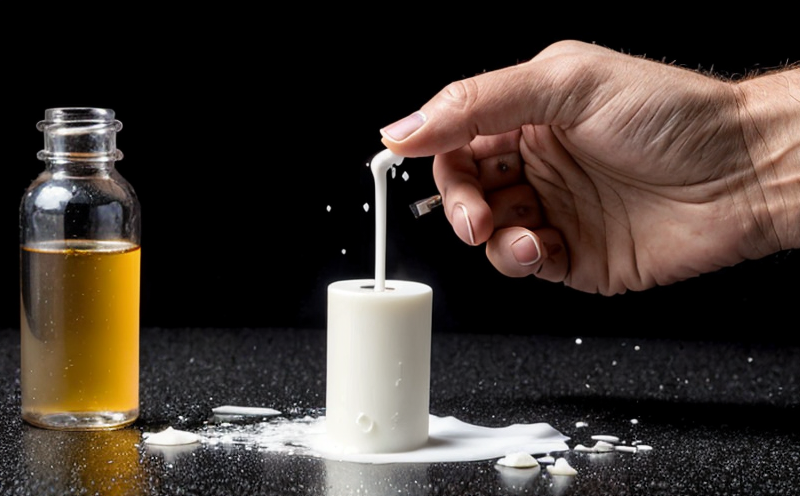USP Disintegration of Troches Testing
The USP Dissolution and Disintegration Tests are crucial in ensuring that pharmaceutical products meet the required standards for dissolution rate, uniformity of dosage units, and disintegration time. These tests are particularly important for troche formulations, which are oral medications intended to dissolve slowly on the tongue.
Disintegration testing ensures that a troche will break down into its component parts within an acceptable timeframe, allowing it to release active ingredients effectively. This test is performed under controlled conditions to mimic real-world use and ensure product consistency across batches. The primary objective of this test is to guarantee that the troches meet the specifications set forth by the United States Pharmacopeia (USP).
The USP Dissolution Testing apparatus typically consists of a basket or paddle system immersed in a vessel filled with a simulated body fluid, such as phosphate buffer solution. For disintegration testing of troches, a specific apparatus and method are used to simulate the conditions under which the troche would be consumed. The troches are placed into the apparatus, where they undergo mechanical agitation and exposure to the test medium.
| Test Parameter | Description | USP Compliance |
|---|---|---|
| Apparatus Type | Basket or paddle system with a specific mesh size and rotation speed. | USP Chapter 712 |
| Test Medium | Simulated gastric fluid (SGF) or phosphate buffer solution. | USP Chapter 712 |
| Temperature and Time | 37°C ± 0.5°C, with a specific time for observation. | USP Chapter 712 |
The test involves placing the troches in the apparatus and allowing them to undergo mechanical agitation while being exposed to the test medium. The disintegration time is recorded, and it should meet the USP specifications for dissolution rate and uniformity of dosage units.
- Troches are typically tested at 37°C ± 0.5°C in a phosphate buffer solution.
- The test duration can vary based on the specific USP chapter being followed.
- Disintegration is considered complete when all parts of the troche have broken down into small fragments or particles.
This testing method ensures that the product performs as expected in real-world conditions, providing patients with effective and consistent treatment. The test results are critical for ensuring compliance with regulatory standards and maintaining patient safety.
Why It Matters
The USP Disintegration of Troches Testing is essential in the pharmaceutical industry because it ensures that troche formulations meet the required standards for dissolution rate, uniformity of dosage units, and disintegration time. These tests are critical to maintaining product quality, patient safety, and regulatory compliance.
Disintegration testing helps ensure that the active ingredients in a troche are released effectively when consumed. This is particularly important for troches because they are designed to dissolve slowly on the tongue, allowing them to provide sustained release of medication over an extended period. The test also ensures that the product is consistent across batches and meets the specified disintegration time.
By performing this test, manufacturers can ensure that their products meet the required standards for dissolution rate, uniformity of dosage units, and disintegration time. This not only enhances patient safety but also helps to maintain a positive reputation in the market. Compliance with these tests is essential for maintaining regulatory compliance and ensuring product quality.
Why Choose This Test
The USP Disintegration of Troches Testing offers several advantages that make it an ideal choice for pharmaceutical manufacturers. Firstly, this test ensures that the troches meet the required standards for dissolution rate, uniformity of dosage units, and disintegration time. By performing this test, manufacturers can ensure that their products are consistent across batches and meet the specified disintegration time.
Secondly, this test enhances patient safety by ensuring that the active ingredients in a troche are released effectively when consumed. This is particularly important for troches because they are designed to dissolve slowly on the tongue, allowing them to provide sustained release of medication over an extended period. By performing this test, manufacturers can ensure that their products perform as expected in real-world conditions.
Finally, compliance with USP standards is essential for maintaining regulatory compliance and ensuring product quality. The USP Disintegration of Troches Testing helps manufacturers meet these requirements, thereby enhancing the overall reputation of their products in the market.
Use Cases and Application Examples
- Troche Formulations: Ensuring that troches meet the required standards for dissolution rate, uniformity of dosage units, and disintegration time.
- Batch Consistency: Verifying that the product is consistent across batches.
- Patient Safety: Ensuring that active ingredients are released effectively when consumed.
| Use Case | Description |
|---|---|
| Troche Formulations | Testing the dissolution rate and uniformity of dosage units. |
| Batch Consistency | Ensuring that products are consistent across batches. |
| Patient Safety | Verifying that active ingredients are released effectively when consumed. |





